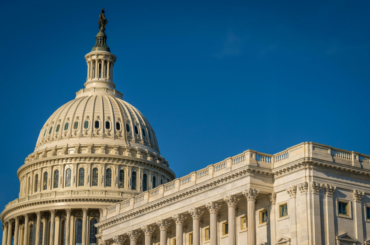Immigration is a topic that kids will likely hear a lot about, whether through current events, their own family histories, or the changing demographics of their town or city. While current political conversations often focus on migrants and asylum seekers from Latin America, it’s important to understand that debates around immigration and citizenship have been aimed at many different groups throughout history. One key example is the Chinese Exclusion Act and the anti-Asian racism that fueled it in the 1800s and 1900s.
Although anti-Asian racism has been highlighted in the media during the past few years, the issue has been affecting the U.S. and the AAPI community for much, much longer — centuries, in fact. Here’s a piece of history to share with kids so that they’ll better understand important issues like racism and anti-immigrant rhetoric.
Use the script below (or portions of it) to talk to kids about the Chinese Exclusion Act and how it shaped the Asian American experience.
Introducing the concept
“Did you know that there was once a law saying that Chinese people couldn’t come to the U.S., and couldn’t even become citizens if they were already here?
It was called the Chinese Exclusion Act and it had a big impact on the way Asian Americans are treated in this country.”
The early days of Chinese American immigration
“In the mid-1800s, the discovery of gold in California attracted people from all over the country as well as from Europe, Latin America, and China.
China was going through extremely hard times, so thousands of people (especially young men) ventured across the Pacific Ocean from China looking for opportunities so they could send money back to their families. By 1860, there were more than 370,000 Chinese people in America.
Large numbers of Chinese workers found jobs in gold mines and in building the new Transcontinental Railroad which would make for faster travel to and from the West. The work was dangerous, and Chinese workers were not treated as well as other workers.”
Blaming Chinese workers
“When the U.S. started having economic problems in the 1870s, many American leaders began blaming Chinese immigrant workers. The media spread messages about Chinese people ‘invading’ America and taking jobs from other Americans.
Newspaper illustrations often used cultural differences, such as the long braided hairstyle that Chinese men used to wear, to depict Chinese Americans as less than human. This helped convince white Americans that Chinese people didn’t belong here.”
The Chinese Exclusion Act
“This extreme negative messaging against Chinese Americans even made it into our laws.
The Chinese Exclusion Act was a law put into place in 1882 that said that Chinese laborers could not move to the United States. Chinese people would only be allowed to come into the U.S. if they were merchants, clergy, diplomats, teachers, or students.
The law also said that Chinese people couldn’t become U.S. citizens, even if they were born here! It was the first and only U.S. law banning people from becoming citizens based on their heritage.”
Living in a hostile place
“After the law passed, many Americans continued to mistreat the Chinese folks who were here, exclude them from jobs or schools, and even commit violence against Chinese American communities.
Some states passed additional laws saying that Asian people couldn’t own land. Chinatowns started in some cities because Chinese Americans found that they weren’t welcome anywhere else.
Many Chinese Americans fought back against the racist rules and practices. One example was 8-year-old Mamie Tape who tried to enroll in a public school in San Francisco, but kept getting denied because she was Chinese. Her family sued the San Francisco schools, and her mother wrote a letter to the newspaper saying, ‘Is it a disgrace to be born a Chinese? Didn’t God make us all!’”
How the Chinese Exclusion Act ended
“The Chinese Exclusion Act was extended to keep people from the Philippines, India, and Japan — and eventually all of Asia — out of America. The law lasted for more than 60 years, until 1943.
After China became an ally of the U.S. during World War II and thousands of Chinese Americans served in the U.S. military, Chinese Americans were finally allowed to become citizens.
At that point, though, Japanese Americans had become seen as an ‘enemy’ group, and Japanese American families were being forcibly imprisoned in internment camps.”
See our script for explaining the Japanese internment camps to kids.
The long-lasting effects of anti-Asian policies
“Even though these and other anti-Asian laws were eventually changed, they had long-lasting effects. Americans received a strong message for many decades that Asian people should not or could not be ‘real Americans.’
To this day, many Asian Americans are seen as foreign or suspicious — even if they were born here or their family has been here for many generations.”
Discussion questions
- Have you ever heard politicians or the media blame immigrants for problems in our country? Why do you think they would do that?
- Do you think it is fair to limit immigration based on where people are from?
- Do you think it is fair to limit immigration based on what kind of job someone has?
- Why do you think some immigrants are made to feel more welcome than others?
- If you heard someone insulting or stereotyping a person based on where they or their family is from, what could you say or do?







